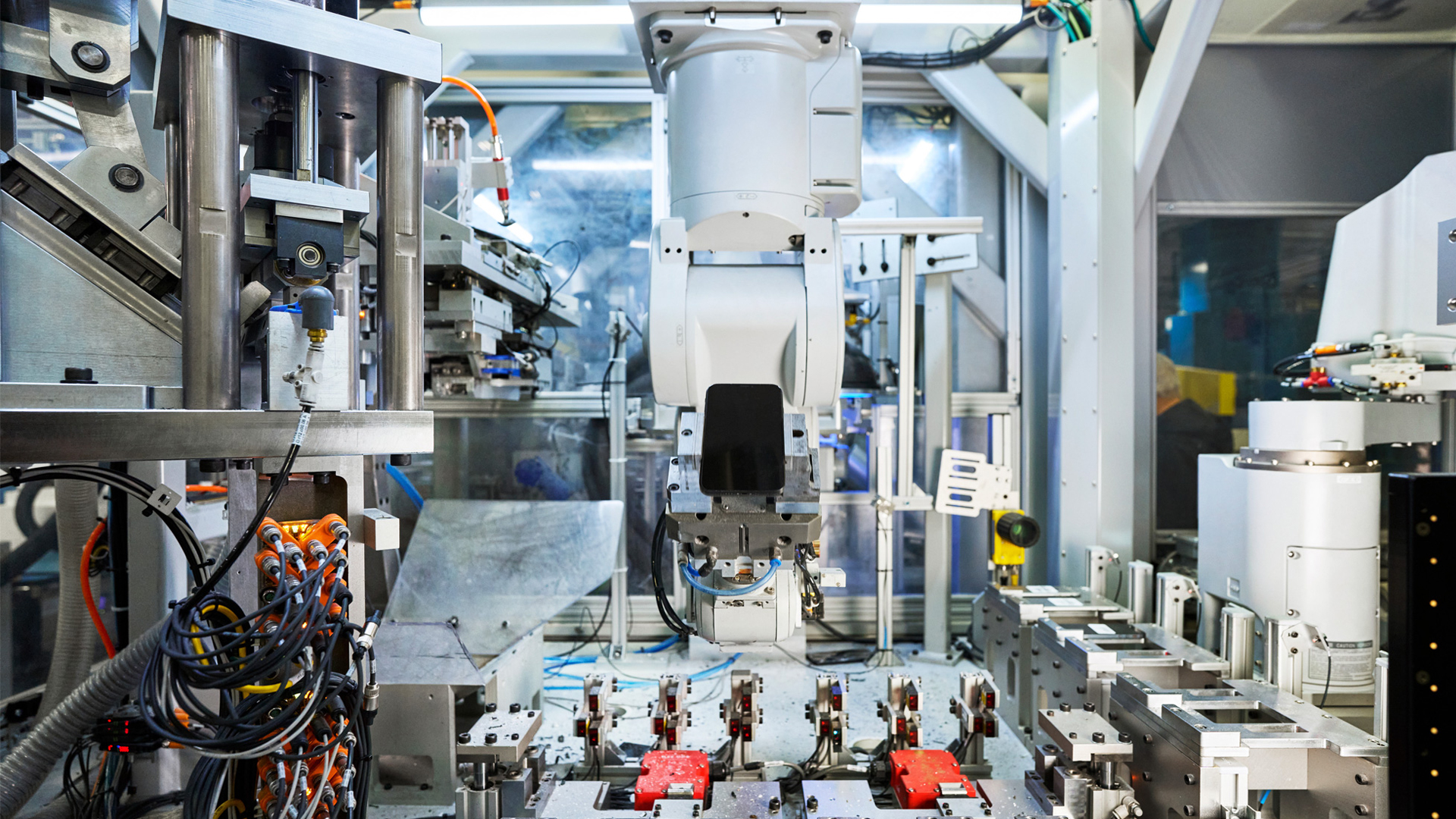Watch Apple's Daisy robot take apart an iPhone because it's cool
Daisy robot uses dexterity and super-cold air

You have no idea how mesmerizing it is to watch a robot disassemble an iPhone.
In honor of Earth Day this Friday, April 22, Apple is opening up its efforts to cut down on e-waste, including using more recyclable materials in new products and packaging and letting a robot breakdown returned and discarded iPhones to recover precious components and safely dispose of hazardous materials.
In a new video from tech YouTuber Sara Deitschy, we finally get a detailed look at how Apple's latest recycling robot, Daisy, breaks down an iPhone.
I got to meet Daisy! Here is how Apple's iPhone recycling robot works👇 pic.twitter.com/YNoXqcScDDApril 20, 2022
Estimates vary on how many iPhones we discard each year, but it's a safe bet that it's in the millions. Apple also received millions of phones that are traded in to upgrade to the new Phone 13. All of this adds up to a potentially huge amount of e-waste and lost materials.
Apple's been working on this sizable environmental problem for years. In 2016, we got our first glimpse of a Daisy's predecessor: Liam. Like Daisy, Liam had a number of stations and 29 robotic arms. However, according to Deitschy's video, Liam wasn't precise enough to, for instance, properly remove all the screws from an iPhone.
In the video, Deitschy drops an old iPhone (it looked like it might've been an iPhone 12) into a tray that fed it to Daisy. The robot retrieved the phone and immediately removed the screen in what looked like a two-step process.
With that separated, it super-cooled the iPhone (white frost appeared on the chassis) which makes the adhesive holding the battery in place brittle enough to break away. The battery then ended up in a bin for retrieval by a human.
Get daily insight, inspiration and deals in your inbox
Sign up for breaking news, reviews, opinion, top tech deals, and more.
Next, Daisy removed all the screws and then the separate components, which all ended up on a conveyor belt where they were retrieved by humans and separated into bins. After that those parts are carted off to places where the recyclable materials and precious metals can be removed and, potentially, end up in new devices.
A good idea, but can it scale?
It's a fascinating, though methodical, process and its efficiency is unclear. You'd clearly need a phalanx of Daisy robots to mass recycle old iPhones. Those details, however, are not in the video. Separately, Apple claims that Daisy can disassemble 1.2 million phones each year and can now take apart 23 separate iPhone models. Another robot, Dave, works on the company's Taptic engines.
With the world producing 20-to-50 million metric tons of e-waste each year, Apple's efforts might be seen as a drop in the bucket, but Daisy is just one part of Apple's eco-friendly efforts. The company plans to be carbon neutral by 2030.
Apple isn't necessarily the only smartphone manufacturer pursuing cutting-edge device recycling techniques. In 2020, Samsung teased its own smartphone recycling robot, but we've heard little about it since.

A 38-year industry veteran and award-winning journalist, Lance has covered technology since PCs were the size of suitcases and “on line” meant “waiting.” He’s a former Lifewire Editor-in-Chief, Mashable Editor-in-Chief, and, before that, Editor in Chief of PCMag.com and Senior Vice President of Content for Ziff Davis, Inc. He also wrote a popular, weekly tech column for Medium called The Upgrade.
Lance Ulanoff makes frequent appearances on national, international, and local news programs including Live with Kelly and Mark, the Today Show, Good Morning America, CNBC, CNN, and the BBC.